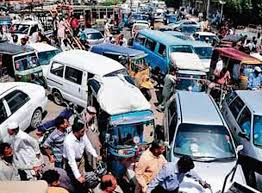Why Indian cities need Behavioral Change Officers

- 21 Jan 2025
Urban India at a Crossroads
India's urban population is projected to reach 40% by 2030, up from 30% in 2011. While this urban surge brings opportunities for economic and social progress, it also amplifies challenges such as:
- Infrastructure strain
- Environmental degradation
- Social inequality
- Climate impacts—including increased frequency of floods, heatwaves, and climate-driven migration
Traditionally, governments have relied on a combination of policy reforms, infrastructure investment, and technological advancements. However, a crucial component is often overlooked: behavioral change.
The Case for Behavioral Change in Urban Governance
Urban planning and service delivery frequently overlook how citizen and provider behavior shapes outcomes. Sustained, meaningful change requires more than just awareness campaigns—it demands behaviorally-informed governance. Here's why:
- Enhancing Service Delivery: Cities like Indore showcase how behavior change can revolutionize urban systems. Once struggling with waste management, Indore became India’s cleanest city through:
- Door-to-door campaigns
- Strict enforcement of segregation rules
- Viral initiatives like the ‘Kachra Gadi’ song to shift mindsets
- Driving Sustainability: In cities like Delhi, the odd-even vehicle rule led to a 30% reduction in traffic congestion by using simple default behavioral triggers. When people opt for public transport or energy conservation, it reduces emissions and eases city operations.
- Improving Public Safety: Behavioral strategies also improve law enforcement and community trust. For instance, Kerala’s ‘Janamaithri Suraksha’ program emphasizes empathetic policing, resulting in stronger police-citizen relations.
- Boosting Institutional Efficiency: Embedding behavioral insights can improve the efficiency of government schemes. The NITI Aayog’s Behavioral Insights Unit and initiatives in Uttar Pradesh and Bihar demonstrate success in using nudges to improve outcomes in areas like maternal health and welfare delivery.
Why Cities need Chief Behavioral Officers (CBOs)
To embed these insights systematically, Indian cities must institutionalize behavioral science through dedicated roles like Chief Behavioral Officers (CBOs) within Urban Local Bodies.
CBO Functions:
- Integrate behavioral strategies into urban planning
- Design evidence-backed nudges and campaigns
- Collaborate with stakeholders, municipal officers, and researchers
- Guide data-driven policy experimentation
Support Structure:
- A small team of behavioral fellows
- Annual Behavioral Plans aligned with city goals
- Investment in citizen engagement platforms
- Use of big data and surveys to uncover behavioral bottlenecks
Examples from global cities like New Orleans (via What Works Cities) show that CBOs can drive change quickly and cost-effectively.
Challenges to Behaviorally-Informed Urbanism
Despite its promise, this approach faces several roadblocks:
- Cultural inertia and resistance to change (e.g., reluctance in waste segregation)
- Lack of training in behavioral science among officials
- Resource constraints in smaller municipalities
- Fragmented coordination between departments (e.g., transport, sanitation)
Way Forward
To overcome these challenges, cities must:
- Institutionalize behavioral roles in governance structures
- Partner with behavioral scientists and think tanks
- Leverage technology (e.g., mobile apps for citizen feedback)
- Scale successful pilots (e.g., Indore’s waste model) across regions
This structured approach not only improves efficiency and citizen satisfaction, but also reduces the costs of service delivery, allowing long-term savings.
